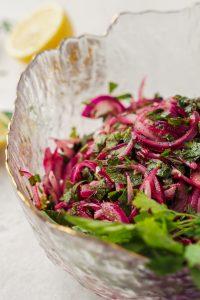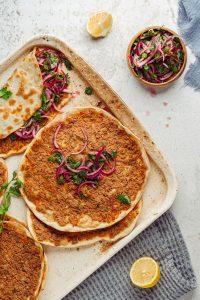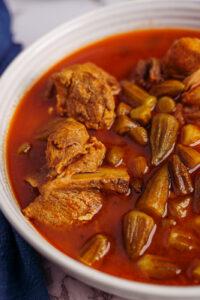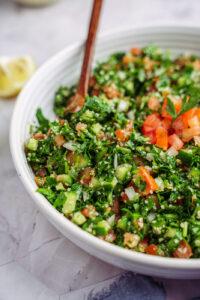Tabouleh (tabbouleh or tabouli) is a traditional Levantine salad that is widely popular in Middle Eastern cuisine, made primarily with finely chopped fresh parsley, tomatoes, onions, and bulgur wheat, all dressed in a simple mixture of olive oil and fresh lemon juice. Known for its fresh, herbaceous flavor and bright citrus notes, tabouleh is a delicious and healthy dish that’s perfect as a side, appetizer, or even a light main course.
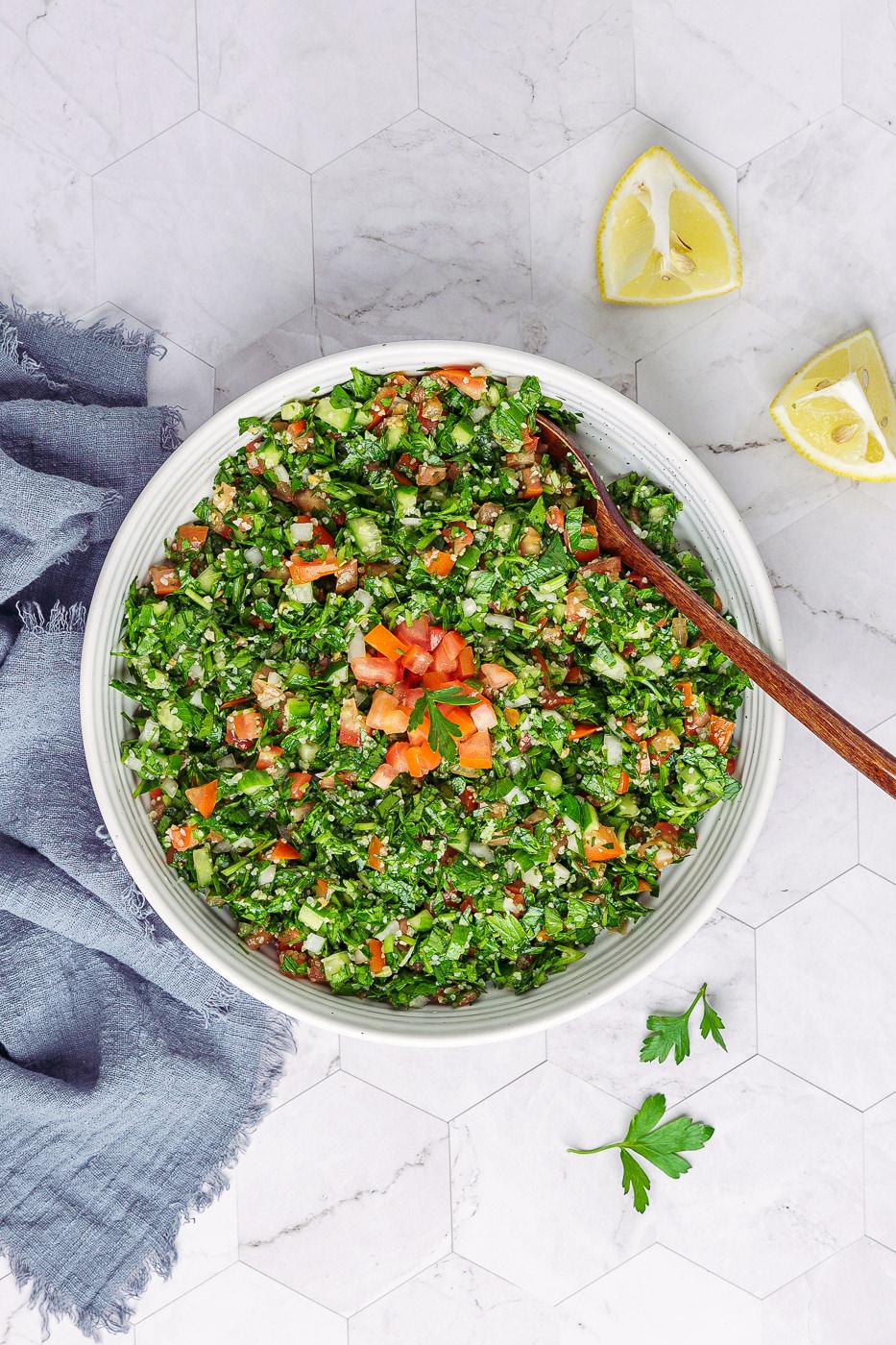
Origins
Tabouleh originates from the Levant region, which includes modern-day Lebanon, Syria, Jordan, and Palestine. It has been a staple in Middle Eastern cuisine for centuries and is especially associated with Lebanese cuisine.
Tabouleh is commonly served during festive occasions, family gatherings, and celebrations. The dish is not only a common part of everyday meals but also a key component of mezze (an assortment of small dishes served as appetizers), which is a traditional part of Middle Eastern cuisine.

Meaning of the Name
The name “tabouleh” is derived from the Arabic word “taabil,” which means “seasoning” or “to spice.” This reflects the salad’s characteristic flavor profile, which is enhanced by the use of fresh herbs and a zesty lemon dressing.

Tabouleh is traditionally considered a parsley salad rather than a bulgur salad. While bulgur wheat is an essential ingredient, the primary component of tabouleh is finely chopped fresh parsley, which gives the salad its distinctive green color and fresh taste.
In classic tabouleh, the ratio of parsley to bulgur is quite high, with the parsley being the dominant ingredient. However, variations of tabouleh may adjust this ratio, sometimes incorporating more bulgur or other ingredients, but the dish generally remains closely associated with its fresh, herbaceous qualities.
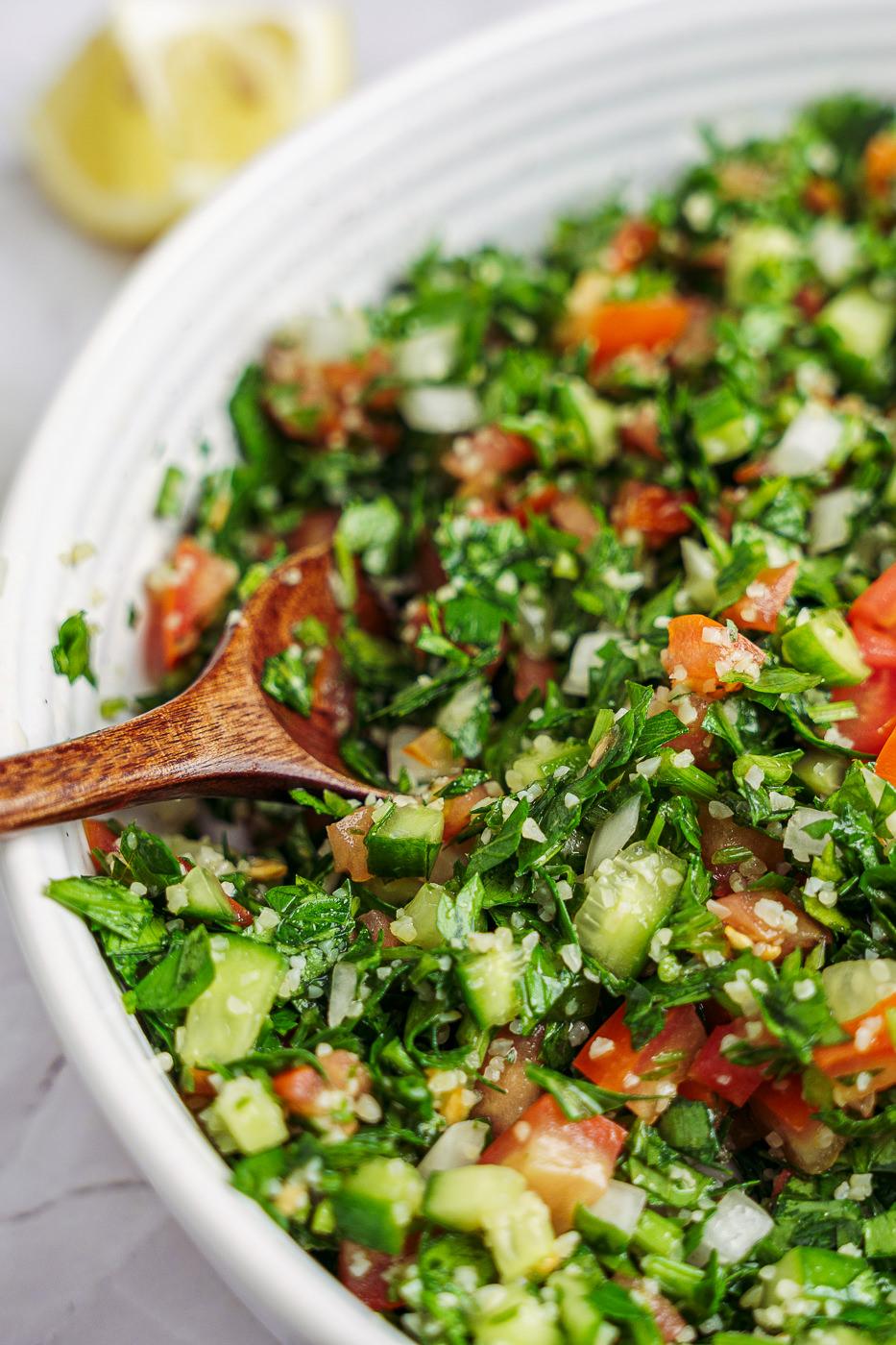
Ingredients Needed to Make Tabouleh Salad
- Parsley: flat-leaf parsley (also known as Italian parsley) is traditionally used. Flat-leaf parsley has a more robust flavor compared to curly parsley. But you can use either one.
- Tomato: Slightly firm tomatoes is preferred to hold their shape better when diced, preventing the salad from becoming too mushy. If you don’t have firm tomatoes available, you can still use softer tomatoes in your tabouleh but to manage their moisture and texture try removing the seeds and excess juice
- Cucumber: While it’s not a traditional ingredient in classic tabouleh recipes, but I like to use it for added crunch and freshness.
- Onion: green onions are typically used, but because it’s not always available in my fridge so most of the time I use yellow onion and finely dice it. Also you can use red onion for adding a pop of color.
- Bulgur Wheat: it’s a whole grain made from cracked wheat, typically from durum wheat. It is a staple ingredient in many Middle Eastern dishes, it comes in different grind sizes, ranging from fine to coarse. fine bulgur wheat is commonly used in Tabouleh. I like to add it unsoaked (but washed) fine bulgur wheat directly to the salad, it will absorb moisture from the other ingredients and the dressing, softening over time. Also it will be slightly crunchy, adding a unique texture contrast to the salad.
- Lemon Juice: fresh lemon juice is highly recommended over store-bought lemon juice. But I use the store-bought sometimes when no lemons in hand.
- Olive Oil: it’s best to use extra virgin olive oil. Use the highest quality olive oil, made from the first cold pressing of olives. It contains no chemicals or heat during extraction, preserving the natural flavors and nutrients.
- Salt.
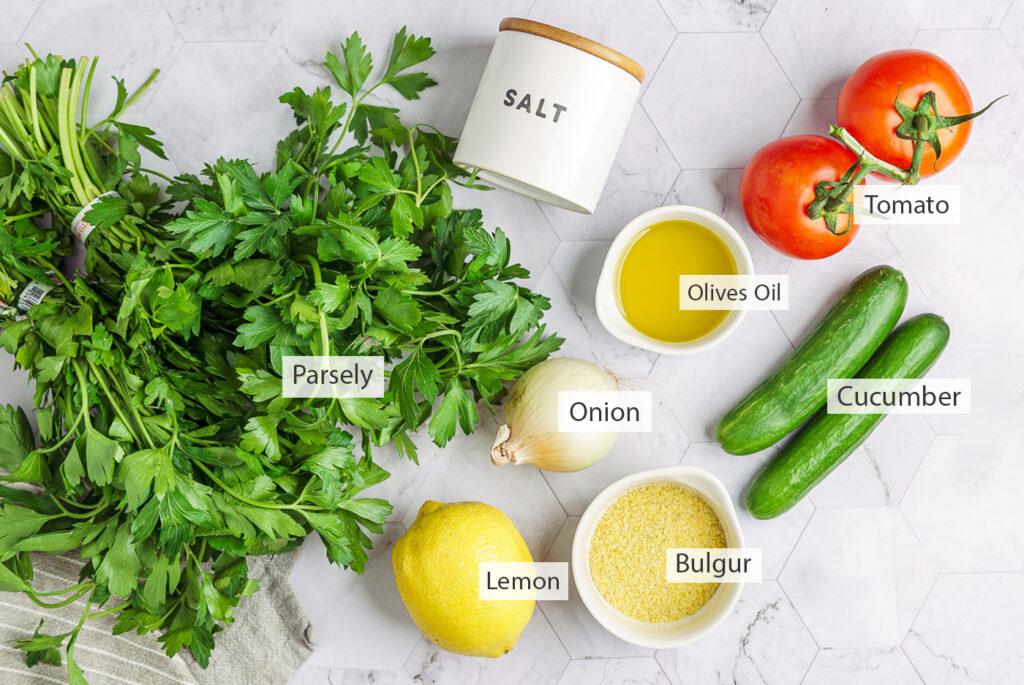
How to Make Tabouleh Step by Step
1- Prepare the Ingredients:
- Chop Parsley: Wash the parsley thoroughly and dry it well. Finely chop the parsley, including the tender stems. The parsley should be chopped finely to integrate well with the salad.
- Dice Tomatoes: Finely dice the tomatoes. If they’re very juicy, you may want to remove the seeds to avoid making the salad watery.
- Dice Cucumber: finely dice it. For a less watery salad, you can also remove the seeds.
- Chop Onions: Finely chop onions. If using green onion, finely chop the green onions, using both the white and green parts.
- Wash Bulgur Wheat: wash bulgur few times and drain it well.
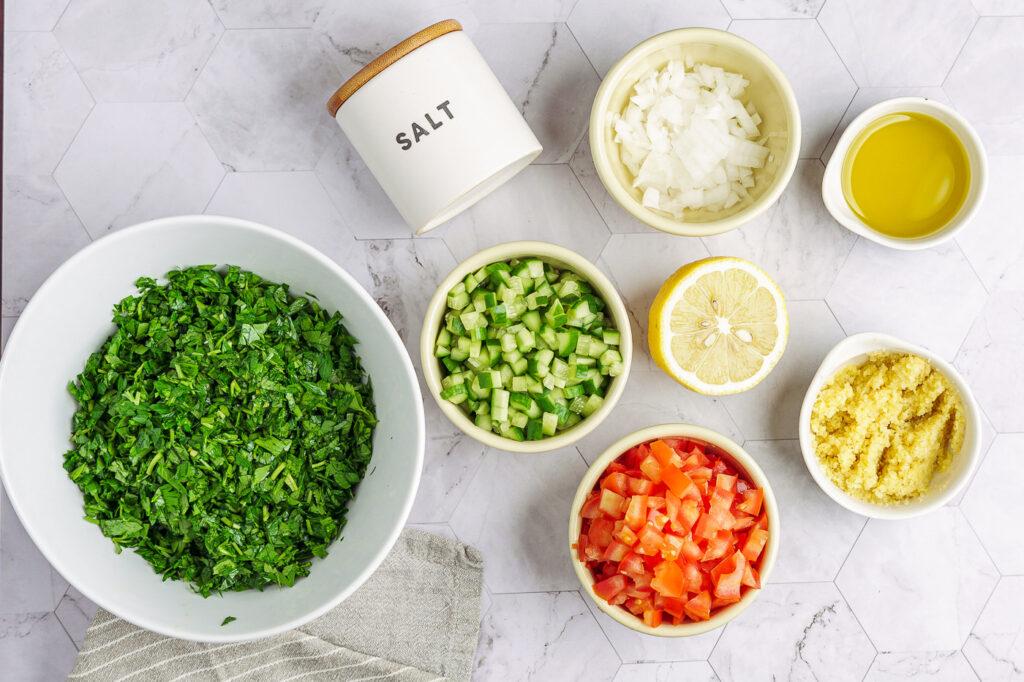
2- Mix the Salad:
- In a large mixing bowl, combine the finely chopped parsley, diced tomatoes, cucumber, and onions. Add the washed fine bulgur wheat. If you’re preparing ahead, cover bowl with plastic bag and keep it in the fridge for up to 1 night, then proceed with the next step.
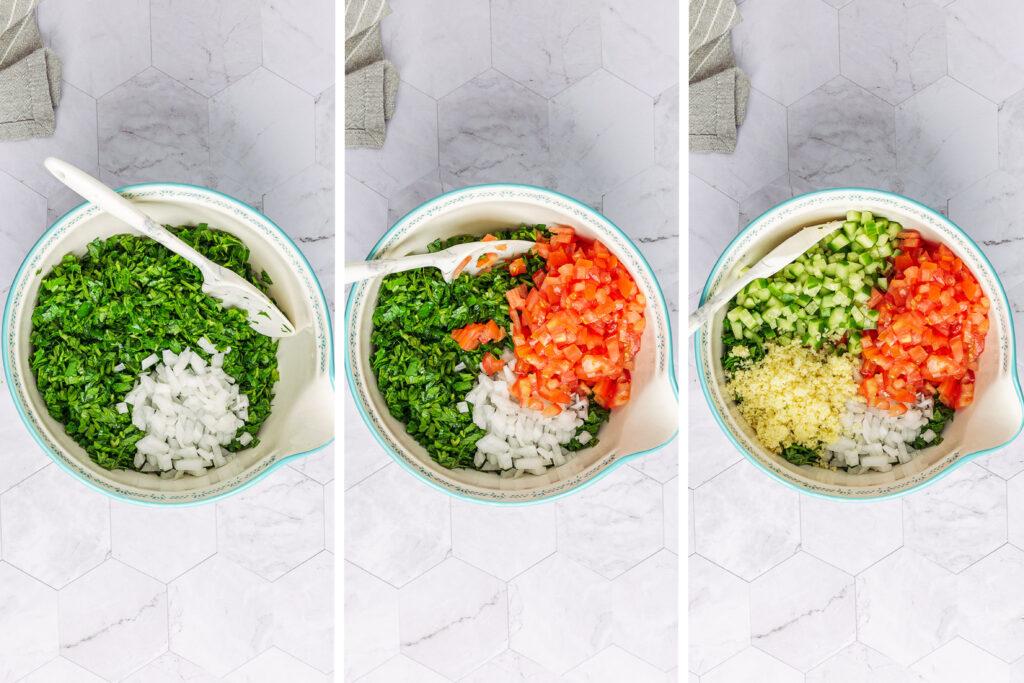
3- Add the Dressing:
- Squeeze half lemon over the ingredients. Add in extra virgin olive oil. Season with salt to taste.
4- Combine and Toss:
- Gently toss the salad to ensure everything is evenly coated. The unsoaked bulgur wheat will begin to absorb the dressing and the juices from the tomatoes and cucumber.
5- Let It Sit:
- Allow the salad to sit for at least 30 minutes to 1 hour at room temperature. This resting time allows the bulgur to absorb the flavors and soften slightly. For a softer bulgur texture, you can let it sit longer, even up to 2-3 hours.
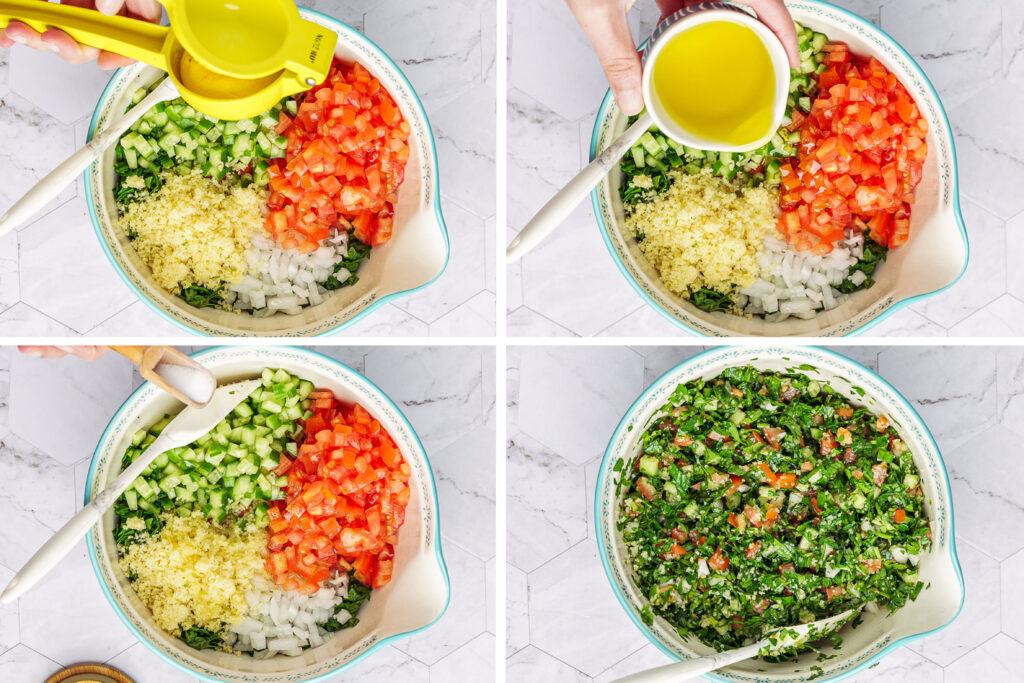
6- Adjust Seasoning:
- Before serving, taste the tabouleh and adjust the seasoning if necessary. You may need to add more lemon juice, salt, or olive oil, depending on your taste preference.
7- Serve:
- Serve the tabouleh chilled or at room temperature. It can be enjoyed as a side dish, or appetizer.
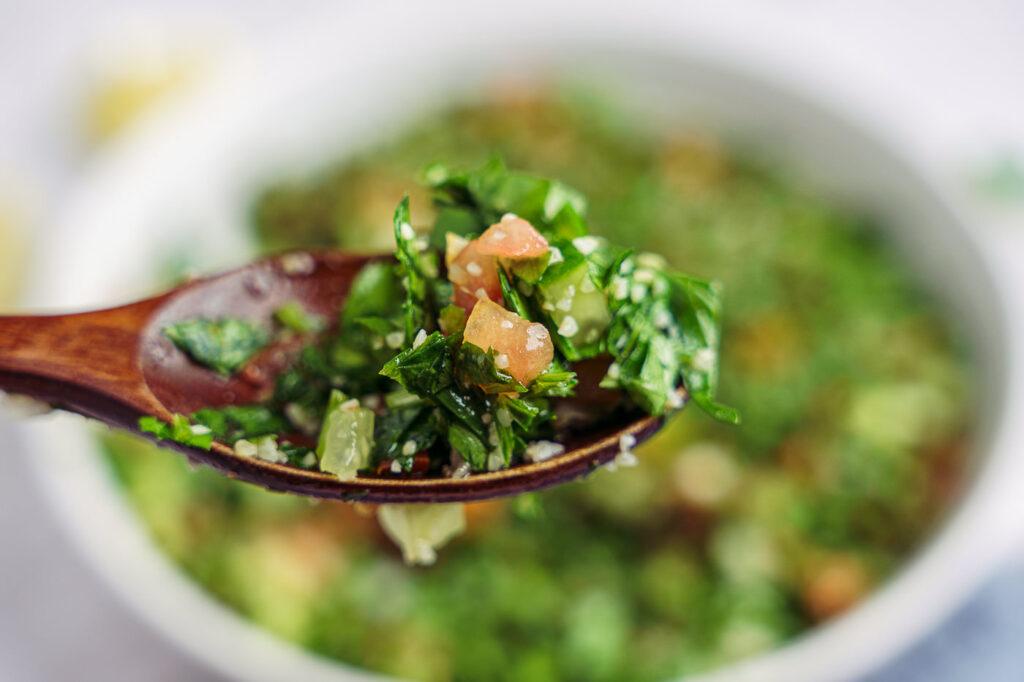
Variations Of Tabouleh
While the traditional tabouleh recipe is widely cherished, there are several variations of this salad that incorporate different ingredients or adjust proportions.
- Quinoa Tabouleh that replaces bulgur wheat with quinoa, making it suitable for those who are gluten-intolerant.
- Fruit Tabouleh that includes fruits like pomegranate seeds or diced apples for a sweet twist.
- Spicy Tabouleh if you kind of chili food person you would like this, which has ingredients like diced chili peppers or a dash of hot sauce for a spicier flavor.
- Protein Tabouleh: some versions of include chickpeas that adds a different texture and extra protein to the salad.
These variations maintain the essence of the traditional tabouleh while offering new and interesting flavor profiles.
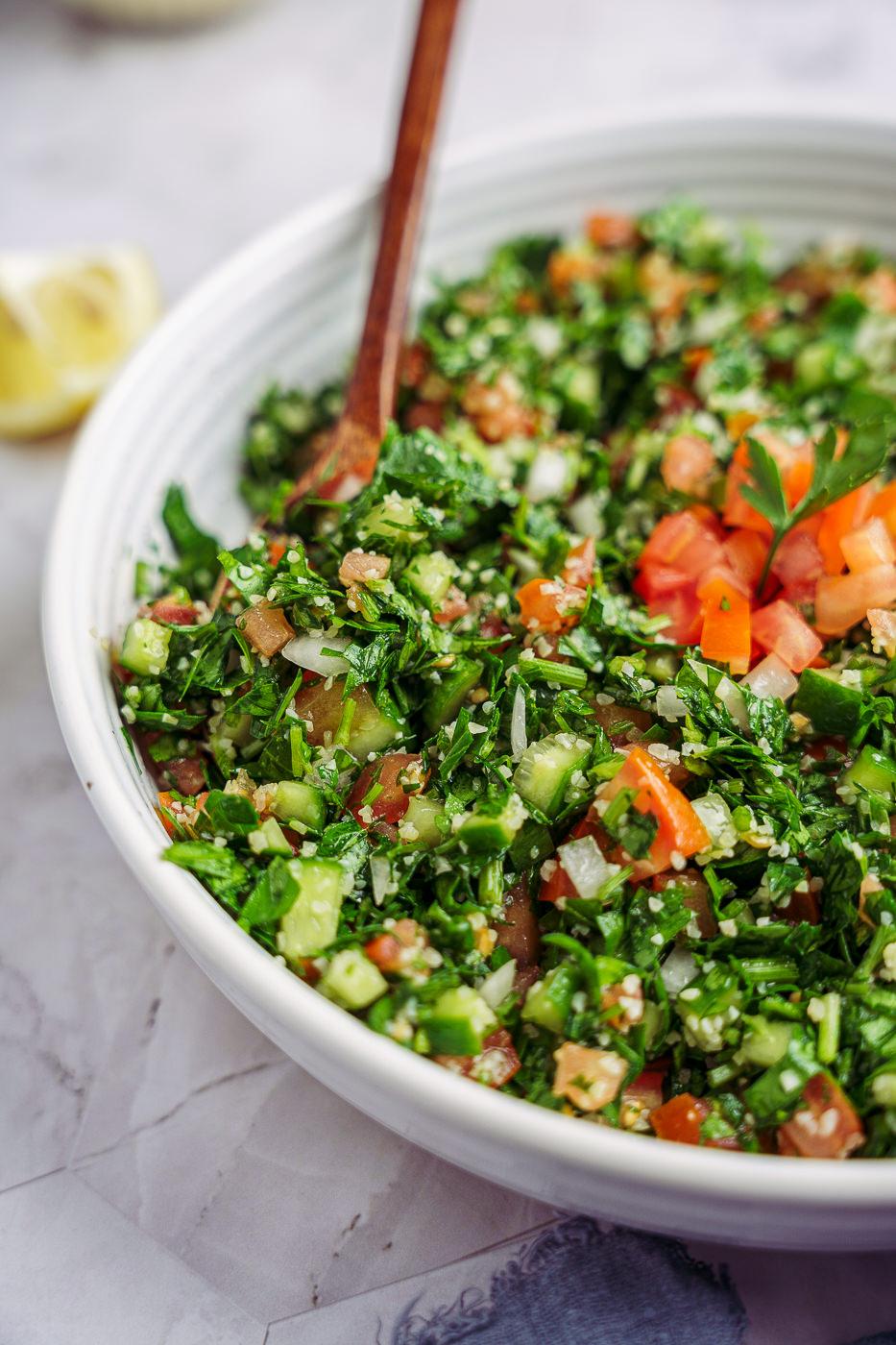
Here’s some recipes you might want to check out
- Beef Kofta Kebab ( Middle eastern kofta )
- Middle Eastern Onion Salad
- Lahm Bi Ajeen (A Middle Eastern Pizza)
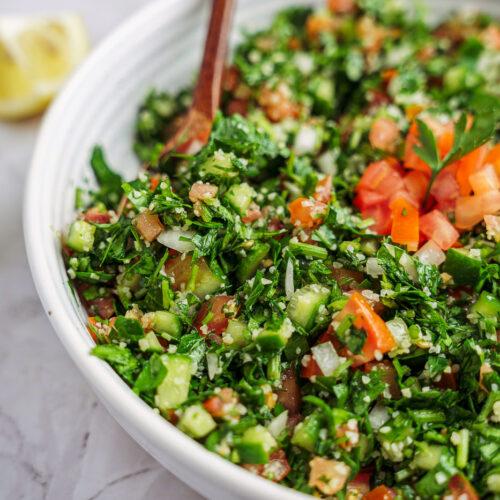
Tabouleh (Middle Eastern Parsley Salad)
Ingredients
- 2 cups fresh parsley preferably flat-leaf
- 2 medium tomatoes about 1 cup when finely diced
- 2 medium cucumber about 1 cup when finely diced
- 2 tbsp fine bulgur wheat #1 washed and drained
- 3 tbsp extra virgin olive oil
- 2 tbsp fresh lemon juice about ½ lemon or more as needed
- Salt to taste
Instructions
- Finely chop the parsley.
- Dice the tomatoes and cucumber.
- Finely chop the onions.
- Wash the bulgur wheat few times and drain it. No soaking required.
- In a large mixing bowl, combine the washed bulgur wheat, parsley, tomatoes, cucumber, and onions.
- Pour the olive oil and squeeze half lemon over the salad.
- Toss everything together until well combined.
- Season with salt to taste.
- Toss again to ensure even distribution.
- Let the tabouleh sit for at least 30 minutes to allow the flavors to meld.
- Serve chilled or at room temperature.
Notes
- The bulgur should require no cooking. There is no need to cook fine #1 bulgur. It simply needs to be soaked in liquid to become tender.
- Use fresh, vibrant parsley, preferably flat-leaf (Italian) parsley, for the best flavor and texture. Wash it thoroughly and dry it well to avoid excess moisture in the salad.
- Choose ripe but firm tomatoes to avoid a watery salad. Plum or Roma tomatoes are good choices due to their lower water content.
- The ratio of parsley to bulgur is key. The parsley should dominate the dish, with the bulgur acting as a complement, not the main component.



